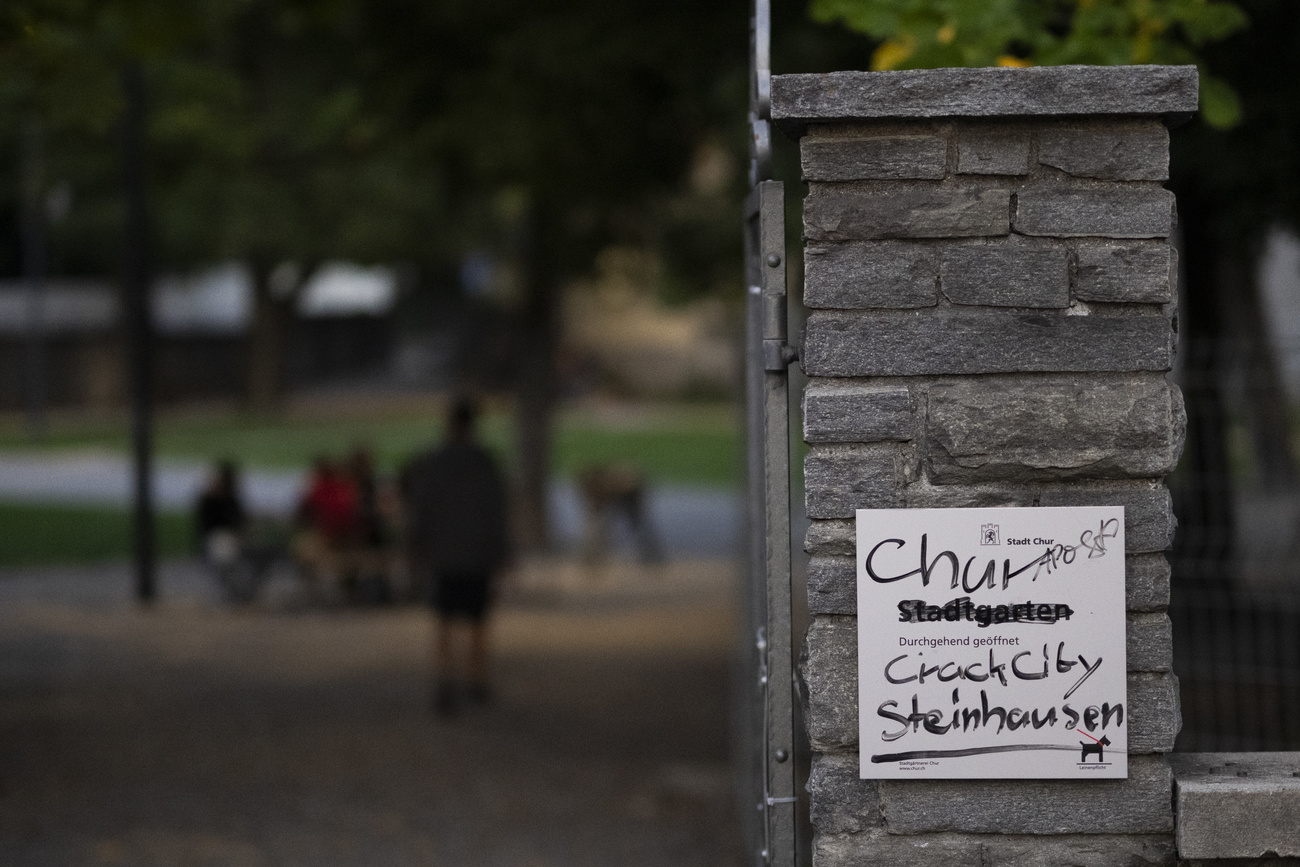Pavilion receives royal seal of approval

The Swiss pavilion at Expo 2005 had a VIP on its hands on Monday, when Emperor Akihito made an official visit to the exhibition site.
Organisers said Akihito and his wife, Empress Michiko, were impressed by Switzerland’s presence at the global exhibition.
The imperial couple are on a three-day tour of Expo 2005, which opened in March on a 173-hectare, purpose-built site in central Japan.
Switzerland is one of more than 120 countries vying for the attention of at least 15 million visitors. By the end of the first week of July more than 10.7 million people had filed through the Expo gates.
The Swiss pavilion, built in the shape of an alpine mountain range, was the couple’s first stop at the Expo site.
They also visited the German and Egyptian pavilions and are expected to take in the exhibitions of Singapore, China and Canada over the next three days.
Akihito was received at the Swiss pavilion by Jenö Staehelin, a former Swiss ambassador to Tokyo, together with Jacques Reverdin, Switzerland’s current top diplomat in Japan.
During their tour the royal couple showed an interest in Swiss technology and asked about Swiss adventurer Bertrand Piccard’s project to circumnavigate the globe in his Solar Impulse aircraft, according to pavilion director Manuel Salchli.
Salchli told swissinfo that it was an honour for the country to be selected as one of the few nations present in Aichi to be visited by the Japanese emperor.
He said that Switzerland enjoyed a good reputation in Japan and that both countries benefited from “strong bilateral ties”.
Switzerland was one of the first countries after the Second World War to receive Emperor Hirohito, the father of the current head of state.
Salchli added that the country may have been chosen because Empress Michiko had visited the Swiss city of Basel and had shown “a certain fondness for Switzerland”.
Mid-term report
Akihito’s visit comes just over halfway through the six-month run of Expo 2005, which is due to close its doors on September 25.
Swiss President Samuel Schmid visited the pavilion during an official trip to Japan in April and was guest of honour on Swiss Day at the Expo.
During the first three months of the global exhibition, 550,000 people visited the Swiss pavilion – around 6,000 each day.
According to a survey conducted by Japan’s Kohken research institute, just over 88 per cent of those who visited said they were “attracted to travel to Switzerland”.
“It’s been reported in the Japanese media that the staff at our pavilion are very good-looking, so this could be one reason why we are getting so many visitors,” joked Salchli.
Albert and Barry
Inside the mountain, a dimly-lit exhibition space displays a selection of artefacts related to Switzerland.
Two of the most popular exhibits are Albert Einstein’s Swiss passport – which is locked away each night in the pavilion’s safe – and a wooden reproduction of Barry, the legendary St Bernard dog said to have rescued more than 40 mountaineers caught in avalanches.
One of the most successful elements of the Swiss pavilion has proven to be the attached restaurant, which sells a range of regional dishes such as rösti and raclette.
“When we first opened we thought that the prices we were charging for food were too expensive, but other pavilions are charging even more,” said restaurant director Markus Buri.
The restaurant, which goes by the name of Alpenrose, caters to a maximum of 600 visitors per day.
swissinfo
The 2005 World Expo runs until September 25 on a purpose-built site just outside the Japanese city of Nagoya.
More than 10.7 million visitors have so far visited the global exhibition, which is being attended by more than 120 countries.
Emperor Akihito and Empress Michiko toured the Swiss, German and Egyptian pavilions on Monday.
The first World Expo took place in London in 1851.
The most recent global exhibitions have taken place as follows:
1970: Osaka, Japan
1992: Seville, Spain
1998: Lisbon, Portugal
2000: Hanover, Germany
2005: Aichi, Japan
The next World Expo is due to take place in the Chinese city of Shanghai in 2010.

In compliance with the JTI standards
More: SWI swissinfo.ch certified by the Journalism Trust Initiative










You can find an overview of ongoing debates with our journalists here . Please join us!
If you want to start a conversation about a topic raised in this article or want to report factual errors, email us at english@swissinfo.ch.